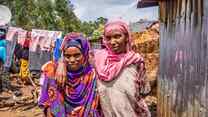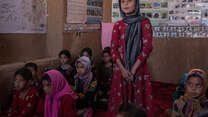This year’s United Nations General Assembly (UNGA) is centered on enhancing global systems for current and future generations through the Summit of the Future. As cycles of violence and suffering become protracted without international mediation, the multilateral systems built in the aftermath of World War II are struggling to ensure a hopeful future for millions of people trapped in conflict and crisis. In fact, many multilateral institutions supporting financing, development and diplomacy can make it harder, not easier, for crisis-affected communities to resolve conflict, meet basic needs and secure pathways to resilience and prosperity.
This year’s inaugural Summit of the Future includes an ambitious agenda “to mend eroded trust and demonstrate that international cooperation can effectively achieve agreed goals and tackle emerging threats and opportunities,” and rightfully acknowledges that decades of benefits and progress have been spread unevenly. In particular, fragile and conflict-affected states (FCAS) and communities have been largely excluded from progress. As highlighted in the International Rescue Committee’s (IRC) 2024 Emergency Watchlist, an assessment of the 20 countries at greatest risk of new humanitarian emergencies, extreme poverty has surged over 42% in Watchlist countries in the past three decades while the rest of the world has slashed poverty by over 64% during the same period. We cannot achieve zero poverty, Goal One of the United Nations’ Sustainable Development Goals (SDGs), without taking actions that target the specific challenges facing FCAS, particularly Watchlist countries.
For these communities, a better tomorrow never seems guaranteed, or even likely. To create a future that works for all, it is critical to remember that a system built for the future cannot have the same blind spots as those in the status quo. But there is a way forward with the right focus: The Summit of the Future must commit to a set of proven solutions that have shown that even in the hardest-to-reach areas of the world, where conflict and other crises abound, there are ways to build resilience and preserve the livelihoods and well-being of those most vulnerable and to create a more hopeful future. Priorities for the Summit should be:
- Ensure prosperity for future generations by protecting child health and well-being
- Build climate resilience and sustainable futures in conflict settings
- Reimagine development and climate finance



